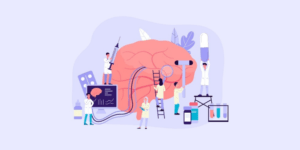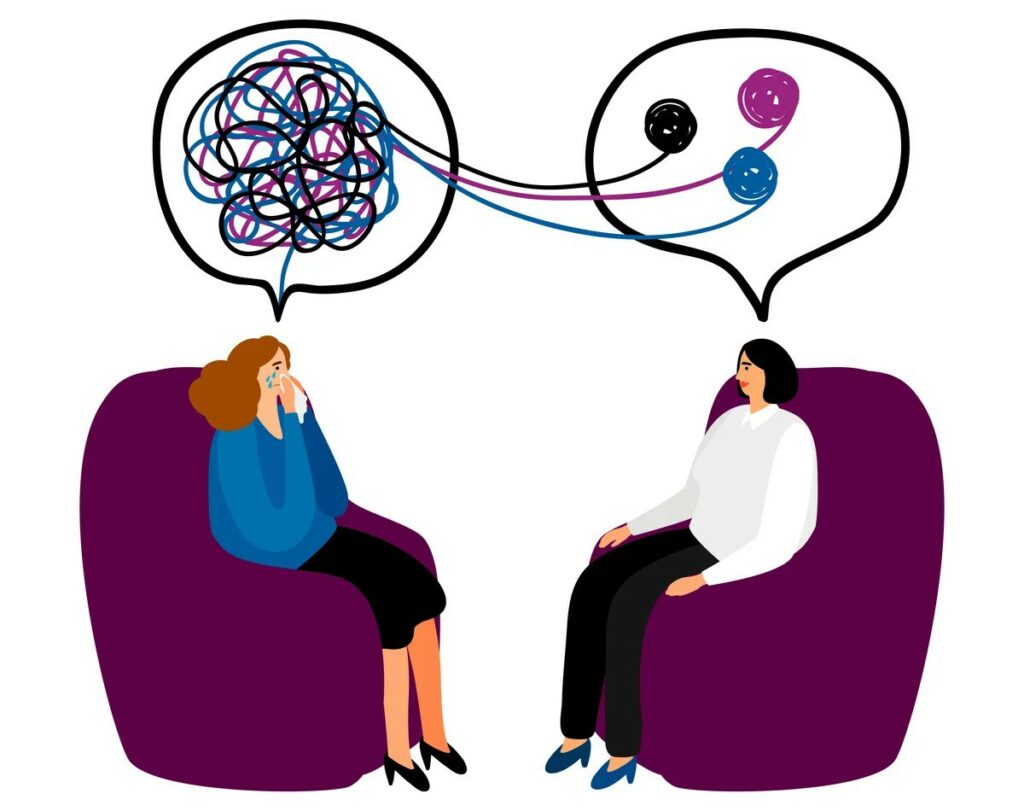Attention Deficit Hyperactivity Disorder, or ADHD, is a condition that can cause problems with focus, hyperactivity, and impulsiveness. While there is no one-size-fits-all approach to treating ADHD, cognitive-behavioral therapy is an effective way to address the symptoms of this disorder. In this blog post, we will discuss the basics of cognitive-behavioral therapy (CBT) and how it can be used to help people with ADHD.
Contents
What Is ADHD?
Attention Deficit Hyperactivity Disorder is a condition that affects both children and adults. Symptoms of ADHD can include difficulty focusing, impulsiveness, and hyperactivity. While these symptoms can be mild for some people, they can cause significant problems in day-to-day life for others.
ADHD can make it hard to succeed in school, keep a job, or maintain relationships. Some people with ADHD may also have difficulty with organization, time management, and following through on tasks. It has 3 types: inattentive, hyperactive-impulsive, and combined. It’s important to note that ADHD is not a behavioral issue, nor is it caused by bad parenting. In fact, ADHD is a real medical condition that can be diagnosed by a mental health professional.
What Is Cognitive Behavioral Therapy (CBT)?

Cognitive-behavioral therapy is a type of psychotherapy that focuses on helping people change their thoughts and behaviors. This type of therapy is effective in treating a variety of mental health conditions, including ADHD. Cognitive-behavioral therapy (CBT) is a type of psychotherapy that focuses on helping people change their thoughts and behaviors. CBT is an effective treatment for a variety of mental health conditions.
It is important to note that CBT is not a quick fix. For CBT to be effective, it must be implemented over some time. This can be done through individual therapy sessions, group therapy sessions, or a combination of both.
How Can Cognitive Behavioral Therapy Help People With ADHD?

While there is no cure for ADHD, there are effective treatments that can help manage the symptoms of this disorder. One of these treatments is cognitive-behavioral therapy. Cognitive-behavioral therapy can help people with ADHD in several ways.
- One of the key ways CBT helps people with ADHD is by teaching them how to change their thoughts and behaviors. For example, someone with ADHD may benefit from learning how to break down tasks into smaller parts or using a planner to keep track of their commitments.
- Cognitive behavioral therapy can help people with ADHD by teaching them new skills to manage their symptoms. For example, CBT can help people with ADHD learn how to better organize their time, set goals, and stick to a routine.
- This type of therapy can also help people with ADHD identify negative thought patterns that may be contributing to their symptoms.
- In one study, children who received CBT had improvements in their symptoms of ADHD, including decreases in impulsiveness and hyperactivity.
- CBT can also be helpful for people with ADHD to learn how to control their impulses and manage their emotions. This type of therapy can provide people with the tools they need to do this. For example, someone with ADHD may benefit from learning how to identify and cope with stressors in their life.
- Finally, CBT can help people with ADHD develop a support system of family and friends who can provide encouragement and understanding.
Cognitive-behavioral therapy is based on the idea that our thoughts and beliefs affect our emotions and behaviors. If we have negative or distorted thoughts, we may feel anxious, depressed, or angry. These feelings can lead to unhealthy behaviors, such as substance abuse or self-harm. CBT helps us to identify these negative thoughts and patterns so that we can change them.
Finding A CBT Therapist For ADHD
If you or someone you know is struggling with ADHD, cognitive-behavioral therapy may be a helpful treatment option. To find a CBT therapist, you can ask your doctor for a referral or search for a therapist online.
When looking for a CBT therapist, it is important to find someone who is experienced in treating ADHD. You can ask the therapist about their experience with treating this disorder.
You may also want to ask about the therapist’s treatment approach and whether they think CBT would be a good fit for you or your child.
With the right treatment, you or your child can learn how to better manage the symptoms of ADHD and live a happy and healthy life.
Things To Consider

When choosing a CBT therapist for ADHD, there are several things you should keep in mind.
- First, you should make sure that the therapist has experience treating this disorder. You can ask the therapist about their experience or look for information on their website.
- Second, you should make sure that the therapist uses an evidence-based approach to treatment. This means that the therapist uses techniques that have been proven to be effective in treating ADHD.
- Third, you should make sure that the therapist is a good fit for you or your child. This means that you feel comfortable with the therapist and feel like they understand your needs.
- Fourth, you should make sure that the therapy is affordable for you. This means that you will be able to pay for the therapy without financial stress.
- Finally, you should make sure that the therapist is located near you. This will make it easier for you to attend therapy sessions.
Alternative Treatment Options for ADHD
If you are not able to find a CBT therapist, there are other treatment options available for ADHD.
Medication
One option is medication. Medication can be used to treat the symptoms of ADHD and help people focus and pay attention. Medication can include Stimulants, Non-stimulants, and Antidepressants.
Therapy
Another option is behavioral therapy. This type of therapy can help people with ADHD learn how to manage their symptoms. Behavioral therapy can include parent training, behavior modification, and social skills training.
Support Groups
There are support groups available for people with ADHD. These groups provide a place for people to share their experiences and learn from each other. They can also provide support and understanding.
Self Help Strategies
There are also self-help strategies that can be used to manage the symptoms of ADHD. These strategies can include exercise, relaxation techniques, and dietary changes. They ca also include organizational techniques and time management skills.
When choosing a treatment for ADHD, it is important to consider your needs and preferences. You should also consider the severity of your symptoms. If you have mild symptoms, you may only need self-help strategies. If you have moderate or severe symptoms, you may need medication or therapy. You should also talk to your doctor about your options. They will be able to help you make the best decision for your unique situation.
No matter what treatment option you choose, it is important to work with a qualified professional who can help you or your child manage the symptoms of ADHD. With the right treatment, you or your child can lead a happy and successful life!
Conclusion
Cognitive-behavioral therapy is a helpful treatment option for people with ADHD. CBT can help people identify and change negative thoughts and behaviors. It can also help people cope with stressors in their life. With the right treatment, you or your child can learn how to better manage the symptoms of ADHD and live a happy and healthy life. There are also other treatment options available for ADHD, such as medication, behavioral therapy, support groups, and self-help strategies.
For more information, please contact MantraCare. ADHD is a neurodevelopmental disorder characterized by difficulty in paying attention, hyperactivity, and impulsivity. If you have any queries regarding Online ADHD Counseling experienced therapists at MantraCare can help: Book a trial ADHD therapy session


